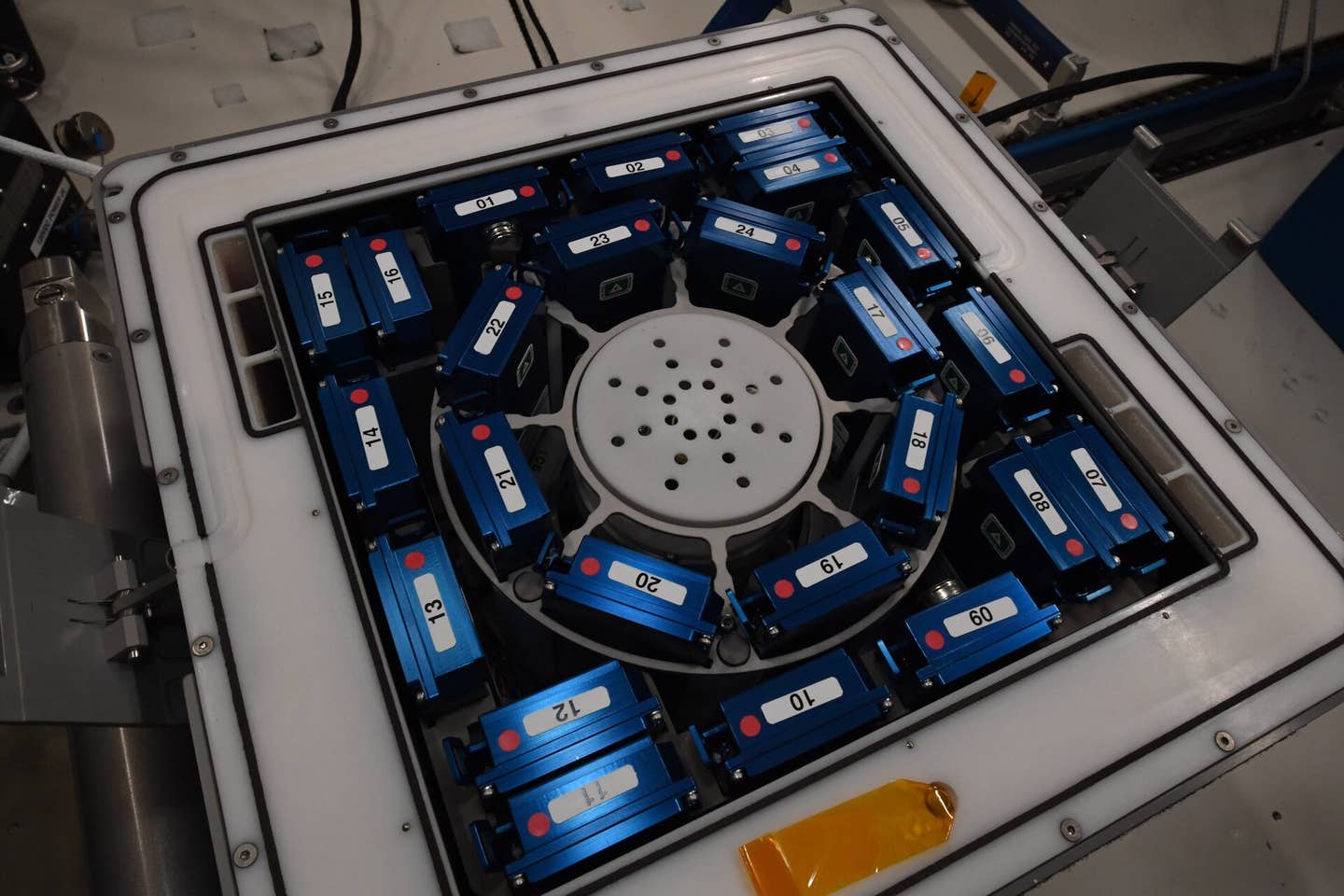Lifesaving new antibody blocks 98.5% of all known HIV strains
A new antibody, 04_A06, neutralizes 98.5% of HIV strains and could transform both treatment and prevention of HIV infection.

Scientists have discovered a powerful antibody, 04_A06, that neutralizes almost every known strain of HIV-1. (CREDIT: Shutterstock)
In what may be one of the most important HIV research breakthroughs in years, scientists have discovered a strikingly powerful antibody, called 04_A06, that is able to neutralize nearly all of the strains of HIV-1 that were tested. The study by an international team led by the University of Cologne, might mark a turning point for efforts to treat and prevent the AIDS virus.
The Search for Nature's Best Protectors
HIV is a survival master. The virus is evolving so quickly that it outpaces most antibodies, and the immune system is left with no alternative but to play whack-a-mole with new variants. But there are a few individuals—"elite neutralizers"—who can produce special antibodies that attack several versions of the virus at once. Those few possessed the key to unlocking 04_A06.
Researchers tested the blood of 2,354 individuals with HIV-1 from various nations, including Tanzania, Nepal, Cameroon, and Germany. Of them, 32 elite neutralizers were found—just fewer than 4 percent of participants—whose immune systems exhibited unusually wide-ranging and potent immunity to the virus. The researchers then harvested certain immune cells from those individuals and cultured more than 800 antibodies in the laboratory. One was exceptional from the start: 04_A06.
A Unique Combination of Breadth and Power
What is so impressive about 04_A06 is its ability to attack HIV at low levels and against numerous viral strains. In laboratory testing, the antibody knocked out 98.5 percent of over 300 strains, better than any individual antibody that had been tested before. It attacks the CD4 binding site, a key "doorway" on the HIV envelope protein that the virus uses to gain entry into human immune cells.
Most antibodies lose their effectiveness when the virus mutates around this site, but 04_A06 was particularly resilient. Its genetic structure, from an VH1-2 gene segment, contains a 11-amino-acid insertion that is rare and causes it to penetrate further into the virus structure. This elongation allows it to grasp regions that the virus cannot easily alter without damaging itself. That particular grasp gives 04_A06 an advantage even when combating viral strains resistant to other extremely prominent antibodies, such as VRC01.
As Dr. Lutz Gieselmann, clinician scientist at University of Cologne's Institute of Virology and first author of the study, explained, "With 04_A06, we have identified an antibody that, on the one hand, exhibits extremely broad activity, and on the other hand, escapes the virus's typical defense mechanisms. This opens up potentially a promising route for future clinical intervention."
Outperforming Existing Antibodies
To assess how 04_A06 compared to other leading antibodies, scientists tested it against several hundred lab-engineered HIV pseudoviruses. Only five to nine out of a panel of 337 strains were resistant to some extent at all, and the antibody possessed a nearly unprecedented breadth of neutralization. It also performed well against viruses already resistant to other antibodies—neutralizing nearly 80 percent of viruses that evaded VRC01.
Deep mutational scanning, a method used to screen for how viruses mutate to evade immune attack, discovered that no mutation would make 04_A06 weaker significantly. In contrast to other antibodies with clear-cut "escape points," 04_A06 drove the virus into a genetic dead end. Any mutation that would allow HIV to escape the antibody would also make it incapable of living.
Testing in Humanized Mice
In vitro experiments have their limitations. To test the efficacy of 04_A06 in living organisms, researchers used mice with human immune systems. The "humanized" mice were infected with HIV-1 and given either 04_A06, other antibodies, or a dummy treatment. The results were dramatic.
While control mice maintained chronic infection and mice given older antibodies had transient drops leading to viral rebound, all the mice given 04_A06 achieved lasting viral suppression for the entire duration of the 12-week study. Even more notably, when administered after other therapies failed, the antibody wiped out detectable virus from the blood altogether. Sequencing of the virus showed no emergent, stable escape mutations, which makes it clear how difficult it is for HIV to escape this antibody.
When treatment was halted, the majority of mice were virus-free for several weeks until the antibody levels dipped below a threshold value, which suggests that constant level can potentially prevent infection forever.
Modeling Protection in Humans
Aside from treating infection, 04_A06 could also prevent it. To test this possibility, scientists infected the antibody into viral samples from volunteers in massive clinical trials known as the AMP studies, which evaluated how well particular antibodies protect against real HIV exposure. 04_A06 destroyed nearly every virus from these trials—including resistance to VRC01—with incredible potency.
Computer models that interfaced with lab data and simulated human pharmacokinetics estimated that a single injection of a long-acting version of 04_A06 would be able to protect against infection for up to six months with more than 93 percent estimated efficacy. This means that in the years to come, people with high exposure risk for HIV might only need one or two shots per year to stay protected.
Professor Florian Klein, who leads the Institute of Virology at University of Cologne and is the lead author of the study, highlighted the global cooperation that had enabled the breakthrough. "Success in this work was due to close collaboration with African, Nepalese, and US study centers," he said. "The next stage is to further test the safety and efficacy of the antibody in clinical studies as a step towards patient treatment."
A Special Structural Advantage
Molecularly, the way 04_A06 clamps onto the virus, cryo-electron microscopy revealed. The long amino acid insertion on the antibody acts like an arm extending and touching nearby sections of the viral envelope, attaching to sections that rarely mutate at all.
These "conserved" sections are crucial for the survival of the virus, so any move to alter them would likely render HIV useless. This can explain why 04_A06 continues to be antiviral active even against escape mutants avoiding other antibodies that target the same site.
Interestingly, 04_A06 integrates elements of two big classes of antibodies: the well-known VRC01 family and the less frequent IOMA type. It borrows one's structural specificity and the other's versatility and puts them together in a hybrid which has rarely appeared before.
Practical Implications of the Research
If findings in models and animals apply to humans, 04_A06 could revolutionize HIV treatment. Current antiretroviral drugs work well but need to be administered every day for life and have side effects. A long-acting antibody like 04_A06 could make treatment easier, giving patients a way to maintain viruses at bay with far fewer doses. It could also be used as a prevention for people at risk of becoming infected, including newborns and medical workers.
The antibody has already been licensed to Vir Biotechnology, Inc., which is renowned for breaking new grounds in antibody-based treatments. Human clinical tests will need to authenticate its stability, safety, and protection levels in real-world situations.
However, early results suggest that 04_A06 might ultimately play the role of a bridge between regular medication and the much-desired HIV vaccine.
Research findings are available online in the journal Nature Immunology.
Related Stories
- Game-changing molecule turns HIV against itself to halt activity
- New portable testing device rapidly detects HIV and COVID-19 with high accuracy
- AIDS patient cured of HIV after receiving a bone marrow transplant
Like these kind of feel good stories? Get The Brighter Side of News' newsletter.
Rebecca Shavit
Science & Technology Journalist | Innovation Storyteller
Based in Los Angeles, Rebecca Shavit is a dedicated science and technology journalist who writes for The Brighter Side of News, an online publication committed to highlighting positive and transformative stories from around the world. With a passion for uncovering groundbreaking discoveries and innovations, she brings to light the scientific advancements shaping a better future. Her reporting spans a wide range of topics, from cutting-edge medical breakthroughs and artificial intelligence to green technology and space exploration. With a keen ability to translate complex concepts into engaging and accessible stories, she makes science and innovation relatable to a broad audience.



